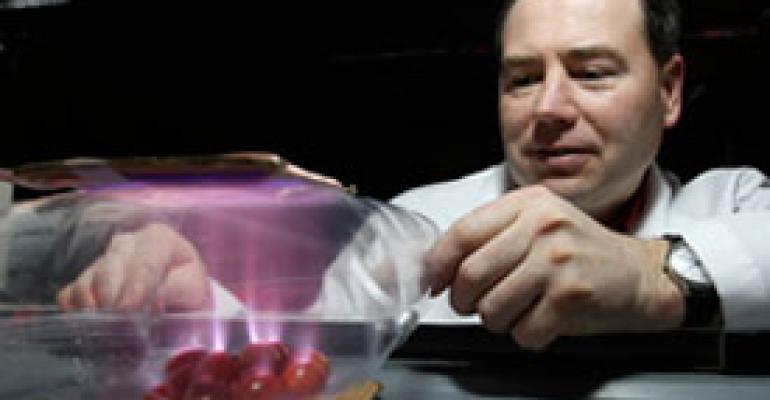WEST LAFAYETTE Ind. Purdue University said Monday a researcher there has developed a new method for killing some harmful bacteria in bagged produce, such as lettuce and tomatoes, that, if proven commercially viable, may reduce incidents of foodborne illness.
Researcher Kevin Keener designed a device consisting of a set of high-voltage coils attached to a small transformer that generates a room-temperature plasma field inside a package, ionizing the gases inside, the university says. The process kills harmful bacteria such as E. coli and salmonella, which have caused major public health concerns during the past decade and, in recent years, harmed some restaurant customers and reduced sales of products containing produce implicated in the outbreaks.
“So far, it has worked on spinach and tomatoes, but it could work on any type of produce or other food,” said Keener, an associate professor in Purdue's Department of Food Science. He noted that he has successfully tested the process using glass containers, flexible plastic-like food-storage bags and rigid plastics, such as strawberry cartons and pill bottles.
In the plasma field created by Keener’s device, which is a charged cloud of gas, oxygen has been ionized and turned into ozone. Treatment times for the system created by the Purdue researcher range from 30 seconds to about five minutes, Keener said. Eventually, the ionized gas will revert back to its original composition.
Keener said the next step is to develop a commercial prototype of the device that could work on large quantities of food. Funding for his research came from Purdue Agriculture, and a patent on the technology is pending.
Ozone has been shown in numerous studies to be more effective at killing bacteria than water and solutions such as chlorine. It is being investigated on several fronts as a means to better clean fresh produce.
In a presentation in Monterey, Calif., last fall, Ahmed Yousef and Sadhir Satry of Ohio State University explained their test system, which uses ozone gas in conjunction with standard vacuum chilling to increase the effectiveness of post-harvest produce sanitizing efforts. When combined with ozone-enhanced storage practices, research indicated, the hybrid system nearly triples the effectiveness of E. coli elimination and growth-inhibiting processes, compared to a chlorine wash.
The commercial viability of that approach, too, remains to be demonstrated.
According to Purdue sources, Keener’s process is outlined in an article released online early in “LWT - Food Science and Technology,” a journal for the Swiss Society of Food and Technology and the International Union of Food Science and Technology.
The Centers for Disease Control and Prevention in Atlanta has said that about 40,000 cases of Salmonellosis, an infection caused by salmonella, are reported each year in the United States, leading to about 400 deaths annually. Salmonella is at the heart of the ongoing Peanut Corp. of America-linked outbreak that has sickened hundreds and been linked to nine deaths.
CDC reports also indicated that about 70,000 E. coli infections are reported each year, causing dozens of deaths.
Contact Alan J. Liddle at [email protected].

